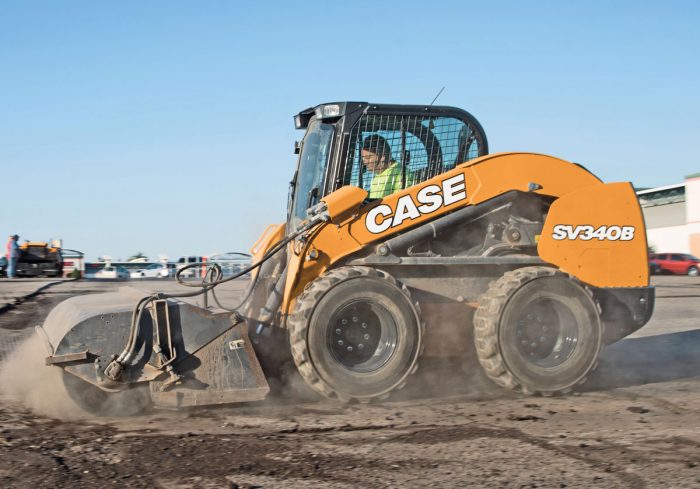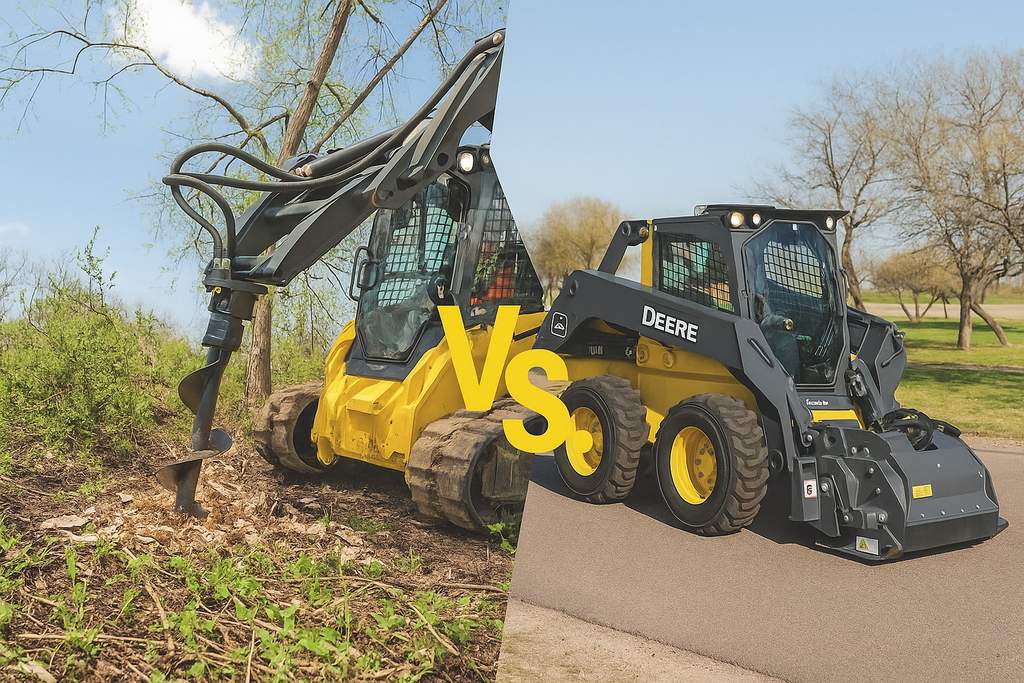Q&A: Case’s Brad Stemper Discusses the Skid Steer and Compact Track Loader Markets

The January/February print issue of Compact Equipment is on desks and in equipment cabs everywhere. It’s also online. In that issue, we deep dive into the skid steer and compact track loader industry with a 6,000-word mega feature. To build that story, we interviewed more than 10 manufacturers. Some of those interviews make equally compelling copy. Over the next few weeks, we’ll be publishing those interviews, asking top brands from Cat to Kubota to detail their skid steer and track loader lines but also share their opinions on trends changing the industry, sales numbers, attachment insights and buying and maintenance advice. Here comes one of those interviews right now. Brad Stemper, with Case Construction Equipment‘s North American product management team, was kind enough to share his time and insights on the small loader market.
Compact Equipment: Brad, thanks so much for taking the time to talk to Compact Equipment. We’re big fans of the brand. Maybe we can start off our discussion by giving a brief history of Case in the skid steer and track loader markets. How did you start, but also how many units do you offer today?

Stemper: For more than 50 years, Case has brought practical innovation to the skid steer market — with the proof of several legacy models still on jobsites today. We now have the strongest compact track loader in the industry with our new TV620B. With eight skid steer models and six compact track loaders, Case has a solution for contractors in any industry segment.
What is Case’s most popular skid steer loader unit, and what is your most popular compact track loader unit? Why are those machines so popular?

The most popular skid steer is the SV280. Its vertical-lift, large-frame chassis gives great reach and lift advantages. This skid steer is 74 hp, so it requires no DEF [diesel exhaust fluid] or regen. Landscapers, agriculture and snow-removal contractors appreciate the robust features of this machine.
For compact track loaders, we must mention the two most popular. The TR310, another unit that does not require DEF because of its 75-hp rating, is easy to trailer. Landscapers, rental yards and those in residential construction see the benefits this machine has to offer, including a 3,100 rated operating capacity without sacrificing a compact footprint. The other popular CTL is our TV620B. This 114-hp unit is dominating in construction, agriculture and forestry segments. With this beefy horsepower, contractors can run the most demanding attachments.
What’s the most popular lifting pattern? Vertical or radial? Do you see radial lift going away? We’re seeing major manufacturers dropping radial models from their lineup.
Radial still has some advantages, including the best reach at the midpoint of the lift range. There is also a lot less linkage to have to grease and maintain on a radial. Though the market trend for the past 10 years is the vertical-lift configuration, I don’t see the radial lift going away entirely, and certainly not for Case, because of the distinct advantages it offers in certain applications.
Compact track loaders are the most popular category of compact equipment in America. Learn why with loads of track loader features right here.
What are the biggest markets for skid steers vs. track loaders in 2023/24? Ag? Homebuilders? Dirt work?
Ag still consumes most of the skid steers, while construction is still the leader for compact track loaders right now.
How big is the rental market for skid steers and track loaders?
Rental can consume north of 15 percent of the market depending on supply available for the year. Usually, the non-DEF and smaller units make up a good portion due to the ease of transportation for the contractor.
What are the popular new growth markets for skid steers and track loaders? Brush cutting? Asphalt planning? Grade control jobs?
That is a great question, and one that we contemplate every day. We closely monitor market trends and keep in close contact with customers to understand how their needs are evolving. As the portfolio of attachments grow, we are providing solutions that deliver the maximum hydraulic auxiliary horsepower to run mulchers, cold planers and other attachments needed to get the job done.
What new attachment categories are gaining popularity for skid steers and track loaders? Mulchers? Micro trenchers? Grading systems?

Grade control is gaining in popularity, as is what happens as the technology matures out on jobsites. With the continued challenges in skilled labor, contractors need to get as much efficiency as possible out of their machines. The efficiency of grade control technology quickly pays for itself.
What new technologies are evolving the skid steer and compact track loader industries? Grade control? Autos? Telematics?
Case now provides five years of telematics reporting to the customer as standard. This system provides a variety of data to the contractor to have an even more efficient machine. Location, machine health, service reminders and remote software downloads are all possible now.
Does Case offer any battery-powered skid steers or compact track loaders? Do you see electrification having an impact on the industry?
Currently we do not offer a battery-powered solution for skid steers and CTLs. But I am confident that with the advantages of EV along with evolution of battery technology, we’ll see EV in these machines over time. Right now, we see the greatest demands for EV for backhoe loaders, mini excavators and compact wheel loaders.
Are hydraulic systems getting more complex and powerful? What technologies are changing the hydraulic capacity (power, cooling, efficiency) of these tool carriers?
Hydraulic demands for the new high production attachments are changing. We need not only the power, but also the cooling to ensure long component life. Some of our models feature load sensing because of the efficiencies that type of system offers. Case also offers hydraulics on demand so the operator can adjust the flow as the attachment is running to get maximum performance.
What new products or technologies has your company recently released that has changed the landscape of the skid steer or track loader marketplace?
Late in 2021, Case brought the strongest compact track loader to the industry with the TV620B. To ensure the maximum hydraulic performance given the demanding work these machines would be used for, we designed the TV620B with adjustable high flow standard and the option of high pressure [4,100 psi]. The units also come with a standard 1.25-yard bucket to make loading trucks super-efficient.
What advice would you give a contractor looking to buy a new skid steer or track loader? Everyone knows that understanding your application will drive your buy, so maybe some advice on a subject people don’t often think about.

When investing in a new skid or compact track loader, be sure to consider the dealership and OEM support. Buying on price alone will cost you more in the long run — guaranteed. Surveys show that acquisition cost of the machine is not the No. 1 factor when contemplating an equipment purchase. There is value in having prompt and personal service from a dealer that can take care of your needs before and after the sale.
Another thing to think about is the product roadmap of the OEM you are considering. Do your homework to see if the OEM is fulfilling customer needs year after year with feature improvements. When an OEM is responding with upgrades to the product regularly, current owners can trade up and not have to switch brands to get the features that are trending in the market.
Thanks so much for your time, Brad. Learn more about Case Construction Equipment at casece.com.
Keith Gribbins is publisher of Compact Equipment.




